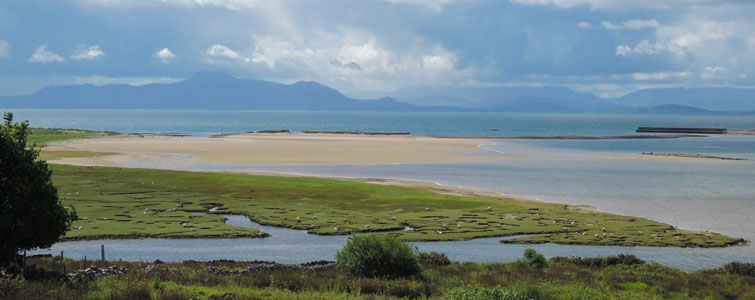Cycling and Walking - Great Western Greenway

The Newport-Mulranny section is a 18km long trail. In Newport an official access point is located to the left just off the N59 travelling to Mulranny, while in Mulranny an official access point is located to the right just off the N59 travelling to Bangor.
The estimated time is 2-2.5 hours for cycling and 5-5.5 hours for walking with an ascent of 82m.
This track was the first to be opened in April 2010 and, a year later, in July 2011, the route was awarded the coveted European Destination of Excellence (EDEN). This award promotes sustainable tourism development models across the European Union and draws attention to the values, diversity and common features of European tourist destinations. The recipients of the award are recognised for their commitment to social, cultural and environmental sustainability.
This section is very beautiful and relaxing and gives the visitor an opportunity to take in all of the scenic landscape surrounding Newport and to get a glimpse of the Atlantic Ocean as it enters into Clew Bay and reaches Mulranny.
In Newport the main feature is the viaduct over the Black Oak River. The viaduct was erected in the late 1800s and built out of local red sandstones with some limestone facings. The Black Oak River flows through the town centre into a tidal estuary where fish nurseries, shellfish and marine invertebrates thrive well. The Newport River drains the famous Lough Beltra and is home to the Freshwater pearl mussels.
Out from Newport the route runs mainly along the Burrishoole River and passes through fields, woodlands and open bogland.
Scattered around the green fields ruined old cottages can be seen. They still keep their charm, especially the old railway cottages.
On the way historical buildings stand including Burrishoole Abbey and Rockfleet Castle nestled on the shore of Rockfleet Bay.
The trail passes by many small lakes such as Lough Fadda, Lough Stirkeen, Lough Furnace and Lough Feeagh where Dragonflies and Damselflies hover above the water in summertime, while Mute Swans can be spotted in wintertime. Nearby Lough Furnace and Lough Feeagh is Lios na Gaoithe, a ring fort. It is supposed to be built in the late iron age; in 1950 a burial cist with the bones of the deceased and some blue glass beads were found here. The beads were possibly made in Africa and for this reason archaeologists think this ring was a place for trading.
This section crosses over many rivers and streams including Burrishoole River, Carrowsallagh River, Owengarve River, Glenthomas River, which are home to Otters. Otters shelter under the bridges or in quiet spots where they can wash the sea water off their coats in order to maintain their insulating properties.
The trail, approaching Mulranny, winds along a sandstone wall taller than a man. Locally the wall is known as “The Park” and many stories grew about it. It is said the landlords built it in order to contain deers, in 19th century. Another version tells it was a folly built to enclose some steep fields not good for grazing. Others state it was built to create employment during difficult times.
Another peculiar building is the Sentry Box built during last century. It is a hut, which people used as a shelter for sitting, reading, writing or even for resting and admiring the surrounding beautiful views. This section ends at Mulranny and offers spectacular views of Clew Bay.
